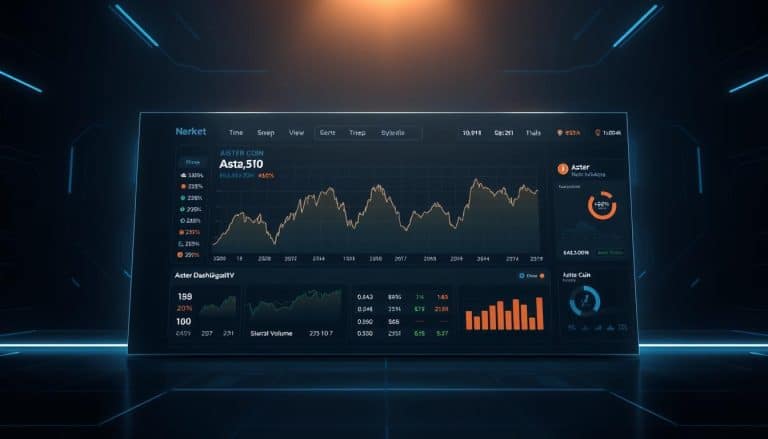Xrp Adoption By Central Banks
XRP is a cryptocurrency created by Ripple Labs Inc. with the purpose of facilitating global payments and settlements. It is based on an open-source protocol that provides real-time gross settlement (RTGS), remittance, and currency exchange services. XRP has become increasingly popular due to its potential for low cost, fast transactions and secure transmission of funds between different currencies. This article will explore how XRP adoption by central banks could potentially benefit them, as well as any challenges they may face when implementing it into their financial systems.
The increasing popularity of digital currencies globally has led to a growing interest among central banks in exploring the potential benefits of adopting such technologies in their operations. Specifically, XRP appears to be an ideal candidate for adoption due to its low transaction costs, high scalability and security features which make it attractive both from a technological standpoint as well as from an economic perspective. The article will examine the advantages and disadvantages associated with XRP adoption by central banks and discuss some of the regulatory concerns that need to be considered before implementation can occur. Additionally, it will assess whether increased adoption of XRP by central banks is feasible in light of current regulations and market conditions.
Overview of XRP
XRP is a digital asset created by Ripple Labs whose primary purpose is to facilitate financial transactions between different currencies and assets. It works as a bridge between two entities and facilitates fast, easy, and low-cost cross border payments. XRP has been designed to address scalability issues faced by other cryptocurrencies, such as Bitcoin, resulting in faster transaction speeds than its predecessors. The user experience of XRP transactions has also been improved with the addition of features like instant settlement. These improvements make it an attractive choice for central banks looking for efficient payment solutions. This provides an opportunity for increased XRP adoption among central banks due to its ability to optimize payments and provide quick access to capital across borders.
Benefits of XRP
XRP is a digital asset built for payments and is known for its speed, cost-efficiency, and security. It facilitates fast transactions that require minimal fees while ensuring the safety of each transaction through advanced cryptography. With these features, XRP has quickly become a preferred choice among businesses and financial institutions looking to make global payments in real-time.
Speed
The lightning-fast transactions facilitated by XRP make it an attractive option for central banks looking to quickly and securely transfer funds. The ability of XRP to complete transactions in seconds allows for increased liquidity, allowing central banks to move large amounts of money across borders with ease. This instantaneous transaction speed not only provides a cost efficiency benefit but also greatly reduces the risk associated with currency exchange rate fluctuations. Furthermore, this capability makes XRP more desirable than other conventional payment solutions as there is no need for costly intermediary institutions when executing payments or transfers. With these benefits in mind, it is clear that XRP offers a unique and efficient way for central banks to facilitate fast and secure payments, eliminating the need for expensive intermediaries and reducing overall costs in the process.
As such, its cost-efficiency could prove invaluable for many financial institutions who are looking for faster international payments solutions without sacrificing security or incurring high fees.
Cost-efficiency
Given its ability to quickly and securely transfer funds, XRP offers a cost-efficient solution for financial institutions needing faster international payments. Interoperability benefits are among the top advantages of using XRP as a payment protocol. It allows banks to leverage existing infrastructure while allowing for compatibility with different digital assets, thereby reducing maintenance costs. Additionally, the scalability implications of using XRP could be significant; it is estimated that the settlement time could be reduced by up to 60 percent compared to traditional cross-border payment solutions. Furthermore, no additional fees are charged upon transactions or deposits, making it an attractive option for financial institutions looking to reduce their operating costs.
In addition to cost savings due to interoperability benefits and scalability implications, XRP features low latency rates and high throughput rates compared to other blockchain networks which makes it suitable for quick settlement of large transactions at low costs. This can provide central banks with an efficient platform for value transfers without incurring exorbitant transaction fees from their banking partners abroad. As such, these lower costs associated with XRP have made it appealing for many financial institutions seeking an alternative means of remittance services beyond traditional methods like SWIFT and SEPA. By leveraging this technology, central banks can ensure cost-efficiency in their operations while providing better service to customers across borders. Taking into account all these aspects related to cost-efficiency, XRP adoption by central banks looks increasingly likely in the near future as more organizations recognize its potential benefits over existing payment solutions available today.
Security
Offering a secure and reliable alternative to traditional payment solutions, XRP provides unparalleled security for financial institutions. By leveraging distributed ledger technology, XRP is designed to protect customer data from unauthorized access while also providing enhanced privacy concerns. This layer of data protection helps prevent the misuse or theft of personal information, helping to ensure the highest levels of security for customers. Furthermore, it offers strong encryption protocols that protect data from hackers and other malicious actors. In addition, its consensus process ensures that all transactions are properly validated before they are added to the blockchain. All these measures help guarantee that XRP transactions remain safe and secure. As such, it can be seen as an ideal choice for central banks looking for a secure method of executing payments with minimal risk of fraud or data breach.
XRP Adoption by Central Banks
Indeed, XRP adoption by central banks is garnering increasing attention as the technology could provide an exciting new avenue for global payments. The use of smart contracts could potentially revolutionize the banking sector and make real-time transactions more efficient with fewer errors. This has made XRP a highly attractive option for many financial institutions looking to streamline their processes and reduce costs. It also offers increased transparency in terms of tracking funds as they move around the world, which could be very beneficial for central banks that have been facing difficulties in monitoring transactions. Additionally, XRP allows for faster clearing times than traditional systems while eliminating counterparty risks thus providing a secure platform to facilitate international payments. Due to these advantages, XRP is quickly becoming an attractive proposition for central banks that are looking to modernize their payment systems and increase efficiency. As such, there is now considerable momentum behind its adoption in this sector.
Challenges of XRP Adoption
Despite the potential advantages, the widespread adoption of XRP by financial institutions has encountered some challenges. One of these is the lack of global interoperability, which hinders its usage across different countries due to their varying regulatory frameworks. This challenge is further compounded by the effects of globalization, as it requires multiple central banks and governments to cooperate in order for XRP to become a universally accepted currency. Without this cooperation, it becomes difficult for one country’s regulations or standards to be enforced on a global scale. As a result, certain restrictions would remain in place that might prevent XRP from being adopted at a larger scale than what is currently seen today. Additionally, there are also other regulatory challenges associated with its adoption such as compliance with anti-money laundering laws and Know Your Customer (KYC) regulations. These add an extra layer of complexity that must be taken into account when considering whether XRP should be adopted or not. To conclude, while there are many potential benefits associated with using XRP for international transactions, the lack of global interoperability and various regulatory hurdles present significant challenges to its widespread adoption by central banks and other financial institutions worldwide. Consequently, further research needs to be done before any wide-scale implementation can take place.
Regulatory Challenges
The implementation of Ripple’s digital asset, XRP, across multiple countries is hindered by the various regulatory challenges that must be taken into account. These include:
- Data privacy concerns: The proliferation of XRP across different countries requires global collaboration and data sharing between key stakeholders. This raises questions about how to protect user data in a secure manner.
- International collaboration: There are currently no established standards for digital asset regulation, which makes it difficult to implement XRP on a global scale. Different countries have varying regulations when it comes to financial technology, making coordination between international organizations challenging.
- Regulatory compliance: Each country has its own set of laws and regulations regarding financial technology that must be followed when implementing XRP services in their jurisdiction. This can prove to be an obstacle for adoption as many governments may not want to take on the risk associated with these new technologies.
By addressing these regulatory challenges, central banks can benefit from using XRP in terms of transaction speed and cost efficiency while ensuring data privacy and regulatory compliance at the same time.
Benefits for the Central Banks
Ripple’s digital asset, XRP, offers numerous advantages to organizations in the financial sector as they explore new technologies. One of the most noted benefits of using XRP for Central Banks is its ability to increase autonomy and reduce dependence on third-party entities. By utilizing a decentralized ledger technology such as blockchain or distributed ledger technology (DLT), banks can keep track of their own transactions without having to rely on external sources. In addition, by utilizing XRP, Central Banks are able to conduct interbank collaborations efficiently with near-instantaneous processing times. This allows them to transfer funds quickly and securely between accounts while still maintaining complete control over their finances.
The potential for increased adoption of XRP by Central Banks is further enhanced by its low transaction costs and scalability. Transactions conducted using XRP have incredibly low fees due to the consensus mechanism used to validate transactions on the network, resulting in significant savings when compared to traditional banking methods. Additionally, due to its high throughput capabilities and speed of execution, it can be scaled up easily as more users come on board. All these factors make XRP an attractive option for Central Banks looking for improved financial autonomy and collaboration opportunities with other institutions.
Potential for Increased Adoption
As the financial sector continues to explore new technologies, there is an increasing potential for digital assets like XRP to be adopted by Central Banks. This is due in part to the global reach of XRP and its ability to seamlessly integrate with existing systems. XRP can facilitate low-cost, secure, immediate payments between banks in different countries and regions around the world. This allows central banks to quickly transfer funds across borders without having to rely on traditional means such as foreign currency exchanges or expensive wire transfers. Additionally, XRP’s decentralized nature provides a higher level of security than traditional payment methods which makes it attractive for central banks looking for a reliable system that keeps customer data safe from malicious actors or hackers. Furthermore, the integration of existing systems with XRP will allow for faster and more efficient cross-border payments which could lead to increased adoption by central banks worldwide.
Frequently Asked Questions
How much does it cost to use XRP?
The cost of using XRP is largely influenced by marketing efforts and scalability challenges. To determine the exact cost, one must assess factors such as transaction fees, infrastructure costs, and liquidity levels. It is also important to consider other economic elements that could affect the financial viability of using XRP. All in all, it can be said that the cost of using XRP varies depending on multiple factors.
What are the security measures in place for XRP?
XRP’s security measures include regulatory compliance and scalability challenges. Data encryption, secure multi-signature transactions, and fraud detection are implemented to ensure security of the system. Network consensus protocols ensure nodes securely communicate with each other.
Are there any limitations to using XRP?
Fraught with management implications and liquidity concerns, XRP usage is not without its limitations. Anachronistically speaking, it’s a precarious proposition that requires careful consideration of all potential impacts. Detailed analysis of the risks and rewards is thus paramount before opting for adoption.
How does XRP compare to other digital currencies?
XRP faces integration challenges and scalability issues, as do other digital currencies. However, XRP’s consensus mechanism is faster and more energy efficient than existing proof-of-work currencies, reducing transaction costs and enabling quick settlements. Its structure also allows for high throughput rates and global accessibility.
What is the timeline for XRP adoption by central banks?
Investment opportunities and cross border payments are made simpler with digital currencies. The timeline for adoption of these currencies by central banks is still uncertain, yet promising. Analyses suggest that the process may take several years before a widespread acceptance of digital currency is achieved.





 Bitcoin
Bitcoin  Ethereum
Ethereum  Tether
Tether  XRP
XRP  USDC
USDC  Solana
Solana  TRON
TRON  Lido Staked Ether
Lido Staked Ether  Dogecoin
Dogecoin  Figure Heloc
Figure Heloc  Cardano
Cardano  Bitcoin Cash
Bitcoin Cash  WhiteBIT Coin
WhiteBIT Coin  Wrapped stETH
Wrapped stETH  Wrapped Bitcoin
Wrapped Bitcoin  USDS
USDS  Wrapped eETH
Wrapped eETH  Binance Bridged USDT (BNB Smart Chain)
Binance Bridged USDT (BNB Smart Chain)  Chainlink
Chainlink  Zcash
Zcash  Monero
Monero  LEO Token
LEO Token  WETH
WETH  Stellar
Stellar  Coinbase Wrapped BTC
Coinbase Wrapped BTC  Ethena USDe
Ethena USDe  Hyperliquid
Hyperliquid  Litecoin
Litecoin  Avalanche
Avalanche  Sui
Sui  Hedera
Hedera  sUSDS
sUSDS  Uniswap
Uniswap  Shiba Inu
Shiba Inu  Dai
Dai  USDT0
USDT0  Canton
Canton  Toncoin
Toncoin  World Liberty Financial
World Liberty Financial  PayPal USD
PayPal USD  Cronos
Cronos  Ethena Staked USDe
Ethena Staked USDe  Mantle
Mantle  USD1
USD1  Polkadot
Polkadot  Rain
Rain  MemeCore
MemeCore  Bitget Token
Bitget Token